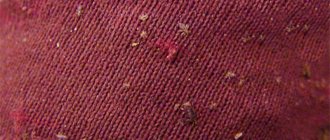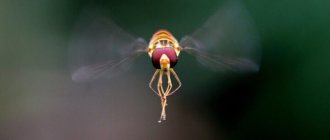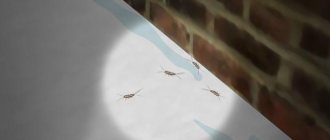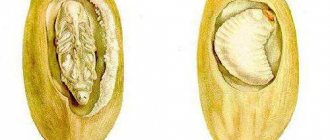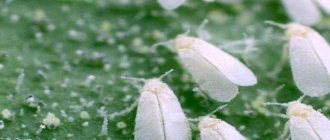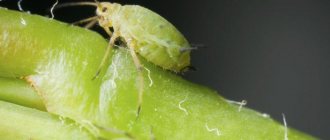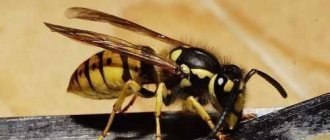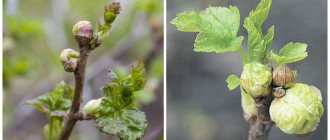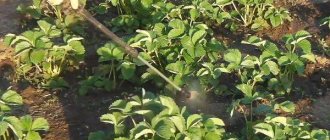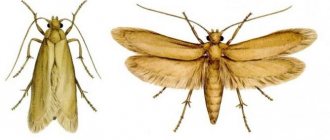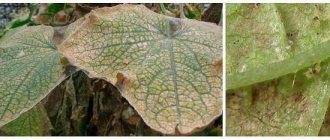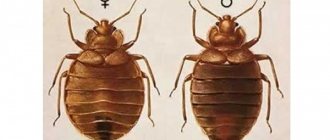Few people know what a book louse looks like and how to get rid of it at home forever. If your apartment has an old library, supplies of dried grass, herbariums or old furniture, then the risk that you will get unwanted neighbors in the form of colonies of these parasites is great. It is no coincidence that the second name of this insect is hay beetle. These small pests feed on organic plant debris and book binding paste.
The book louse is an insect of the order of hay-eaters.
Biological description of the species
The book louse (or Liposcelis divinatorius) belongs to the class of insects, the order of hay-eaters, the family of trogids (insects with rudimentary wings). They are found in the form of single individuals and culigulae (clusters).
You can distinguish hay louse from other household pests by the following features:
- size from 2 to 4 mm;
- high mobility;
- whitish-yellowish body;
- long mustache;
- 3 pairs of legs;
- thickened back;
- lack of wings in females.
The book beetle is lighter in color and smaller than the bedbug, does not fly like a moth or fruit fly, and does not have antennae on its tail like the sugar silverfish. Unlike the blood-sucking louse, it does not bite humans, and unlike the skin beetle, it does not feed on products of animal origin (meat and bone meal, dried fish, dried meat).
The hay beetle does not jump like a flea, and makes characteristic ticking sounds when it hits its head on wood dust or paper.
The greatest similarity is with the dust louse (Trogium pulsatorium), which belongs to the same synanthropic species. These insects can be distinguished by light spots on the forehead that imitate eyes. The dust louse has these spots, but the book louse does not.
The book louse is a small and inconspicuous insect with a round body.
Characteristics
The hay beetle is a small insect (up to 10 mm) with two pairs of colorless wings. Sometimes they may have dark veins or inclusions.
The diversity of species of this beetle explains possible external differences between individuals. Some hay eaters have shorter wings than usual or no wings at all.
Visually, male pests differ from females by the presence of:
- antennae with hair.
- Large spherical eyes.
One of the varieties of insect is the book louse, which is often found in human-inhabited areas.
Habitats
The order of hay beetles includes almost 1,000 insects of different species that live in different climatic zones around the world. Extensive areas infested by these insects are found in tropical and subtropical areas with high air humidity.
Dusty hay beetles (Troctes divinatorius) mostly live near humans or animals.
Small parasites actively breed in libraries, doghouses, bird nests, rodent burrows, haystacks and grain warehouses. They can be found in damp and cluttered rooms and damp basements. They eat mold, starchy substances and plant waste.
These bugs are rarely found in new buildings, more often in old houses and abandoned premises. They can be found in apartments where wallpaper was glued with flour paste. These are mainly old “Khrushchev” and “Stalin” buildings, in which older people live.
A detachment of hay eaters is actively breeding in libraries.
Entomologists consider temperatures of +16…+32°C and humidity above 55% to be a favorable environment for the reproduction of pests. Therefore, it is most difficult to remove hay beetles in the bathroom.
Harmless Inhabitant
Today, science knows 1,700 species. A good half of hay eaters live in the tropics and subtropics. They are considered harmless inhabitants of forest trees and shrubs; they can be found in the ground under stones, in bird nests.
Tropical guest in our homes
The nutritional base of insects is lichens, organic remains, green algae, molds, and dust.
They spoil food supplies, carpets, and furniture. From observations it was found that buckwheat is preferable for them.
Harmless book louse
Household pests are two types of hay beetle: book louse, brownie (dust louse).
Book hay eater
This insect is small in size (1 mm). It can be pale brown, sometimes white. The book louse is completely devoid of wings.
The book louse lives almost everywhere.
Dusty Hayeater
This louse is slightly larger - up to 2 mm. The dusty hay beetle differs from the book beetle in the presence of rudimentary wings. It also differs in color. This is a light yellow insect with reddish spots forming longitudinal stripes on the upper part of the abdomen.
This photo will help you recognize the difference between book lice and dust lice.
It lives in similar places as the book hay eater.
Insect physiology
The hay eater's jaws are not developed enough to handle solid food. To crush it, they use a stick, which is located on their head. Expertly, with the skills of an experienced carpenter, hay eaters break off pieces of grains with a kind of hammer, after which they are eaten. At night, you can hear the sounds of measured tapping made by their hammers.
House subspecies of insects
These little creatures do not refuse other food. Old books with natural bindings that contain paste and casein glue suffer from their activities.
Most often they breed in pots of indoor plants. If there are any in rooms where conditions are favorable for hay eaters (moisture, poor lighting), they need to be removed from these places.
Biological features
The eggs of the hay beetle develop without fertilization. The female can lay up to 100 eggs. The ovipositor can be solitary or in small groups. The clutches are covered with secretions from the rectum, which, when dry, form tiny scales, or are covered with a light web secreted by a characteristic spinning organ on the lower lip and uvula.
One generation develops in 3-4 weeks. Up to 6 generations are produced per year.
In addition to the fact that, having settled in a person’s home, the hay beetle harms things and food supplies, it poses another danger.
Reproduction method
The book louse develops through 3 stages of hemimetamorphosis: egg, larva and imago (mature individual). It reproduces by parthenogenesis (without prior fertilization).
The female can bear offspring 5-6 times a year. She lays 40-60 eggs per day on hard surfaces and covers the clutches with rectal secretions. After 10-12 days, the eggs hatch into larvae. It takes nymphs 21 to 28 days to reach the adult stage.
The rate of maturation depends on temperature and humidity. The higher they are, the faster the parasite grows. Under favorable conditions, 75-80% of the offspring survive. And after a month, new adults are ready to reproduce.
Troctes divinatorius live on average 45 to 50 weeks, and females can lay eggs throughout their lives. Even a single masonry can infect large areas of premises. Therefore, it is important to get rid of hay beetles as soon as they appear.
Reproduction of new individuals occurs without fertilization.
Grinders
If the ticking of a clock begins to be heard from the furniture, this is not a mechanical alarm clock forgotten somewhere. Borer beetles have infested the furniture. The sound of the “death clock” is produced by insect larvae that feed on wood. There may be 2 types of grinders in your apartment: furniture grinders and home grinders.
Furniture
Small brown bugs on a windowsill made of wood may turn out to be furniture grinders that have left their hiding places in the wood. The adult size is 2.7-4.5 mm. The body is cylindrical, elongated. There are 10 clearly visible grooves on the elytra. The body is covered with sparse light bristles.
The adult lives only 6-28 days. As adults, the bugs do not feed; their only goal is to leave offspring. The wood is eaten by larvae, which gnaw holes in it and pupate there.
Brownie
This beetle is unlikely to appear in an apartment, as it prefers frost-damaged wood. But residents of wooden private houses should be wary of it. Compared to other domestic parasites, this is a large insect: 4-7 mm. The color is dark gray with a brown tint. On the sides of the pronotum there are spots of golden bristles.
Weevils and borers
Reasons for appearance
Many housewives are confident that their home is not in danger of being infested with parasites, since it was recently built. But if a book louse appears, entomologists and sanitary and epidemiological services will advise you on how to get rid of it at home.
The book beetle appears and actively reproduces in damp, unventilated areas.
If a person does not monitor the sanitary and hygienic condition of the apartment, does not pay attention to cleaning the premises and stores large supplies of food without a refrigerator, then most likely his house will be infested with house lice. Under such conditions, hay beetles also appear in new buildings.
Struggle
Due to the fact that book louse in the house is not a widespread phenomenon, there are few traditional ways to combat it. But if it still starts up, you can try to get rid of it using mechanical methods:
- take books out into the cold, putting them in a plastic bag;
- the opposite effect is taking it out into the heat.
In addition to folk remedies, you can use modern means: fumigators near bookshelves and other insecticides.
If the population has grown and there are too many pests, you can invite SES employees. They will treat the room with wet chemicals or mist (cold or hot). Any of these methods can really get rid of the pest at any stage of its development.
But if the problem affects large premises (museums, libraries, archives, etc.), then no folk methods will save you. Here, only the sanitary and epidemiological station can resolve the situation, because for the sake of preserving valuables, only this organization will have suitable methods of destruction and special preparations, the proper calculation of which will not allow any damage.
How dangerous are hay eaters for humans?
The hay beetle harms stocks of cereals and dried vegetables. He contaminates them with the products of his vital activity: rectal secretions, skins of hatched larvae. After this, the food becomes unfit for consumption.
Some people have an allergic reaction to hay eaters.
The hay louse causes great damage to books and filing cabinets. The folios, which have become home to a colony of these pests, crumble into dust, worn away by hungry insects. This is a scourge for libraries that have a lot of old publications. The fact is that 30-40 years ago, to glue the spines of books, organic glue based on agar (algae) was used, which hay eaters enjoy eating.
Some people have an allergic reaction to Troctes divinatorius waste products. It is expressed in hay fever, itching of the skin. In severe cases, pulmonary edema is possible.
This insect poses a danger to warehouses, barns and granaries. It destroys the integrity of the grain, corroding its shell. Parasitic larvae eat the embryo from the seeds, so damaged grains do not sprout.
What harm does
Once in a comfortable microclimate, the bookworm begins to multiply very quickly. Up to 6 new generations of the pest may appear in a year .
If this problem is left unattended, insects can multiply and cause significant damage.
Both ordinary apartments and book depositories, museums, libraries, and grain warehouses can suffer from a pest invasion.
The book louse is capable of:
- Gnaw the bindings of books, especially old editions, the spines and pages of which are held together with casein or flour glue.
- Damage old photo albums.
- Destroy important archival documents.
- Turn herbariums of rare plants and insect collections into dust.
If the parasite has settled in the kitchen, the stocks of flour and cereals will be spoiled.
And when it lives in a grain warehouse, a huge number of grain crops can become unusable, since by eating away the germ of the grain, the hay beetle makes it unsuitable for sowing.
Ways to get rid of book lice at home
SES workers tell you how to get rid of hay eaters in an apartment yourself.
You can fight them in 3 ways:
- mechanical;
- physical;
- chemical
The mechanical method involves manual cleaning of food supplies, sifting and aeration of cereals. This reduces contamination of bulk solids, but does not eliminate contamination.
You can get rid of book lice using mechanical and physical methods.
The physical method involves temperature treatment of contaminated materials. Nymphs and adults die at a temperature of +85°C. The same thing happens when the temperature drops to -5°C. Therefore, cereals, flakes, and medicinal herbs can be heated in the oven or placed in the freezer for 48 hours. The products are then mechanically processed to remove dead insects.
But in any apartment there are places that cannot be treated mechanically and physically: these are libraries, bathrooms, collections of paintings, flowers and herbs. In such cases, chemicals - insecticides - will help. Residential and warehouse premises are treated using fumigation, aerosol disinfestation and spraying with phosphine-based anti-gray beetles.
The chemical treatment method guarantees the destruction of not only adults, but also eggs with a remedy for hay beetles. Chemical destruction of pests must be carried out by employees of the sanitary and epidemiological service. Uncontrolled use of pesticides is dangerous to life and health.
How to get rid of wood-boring beetles
It is not at all easy to combat this wood pest, since it does not crawl out, but is constantly located in the thickness of the wooden structure. Therefore, its presence is sometimes discovered quite late, when the structures are already deteriorating. If the shashel was discovered at an early stage, then the fight against it must be started immediately, otherwise only memories will remain from the wooden structure.
There are several effective ways to get rid of pests of this type. For example:
- Using insecticides.
- By fumigation and fogation (fumigation).
- Treat the wood with dry steam.
- Destroy the pest with microwave radiation.
- Use folk remedies.
wood borer beetle how to get rid of Kirov
Watch this video on YouTube
Chemical insecticides - antiseptics
Chemicals in the form of emulsions or aerosols are suitable to combat shawl. Other forms of release will be ineffective because they will not be able to penetrate the thickness of the wood. Depending on the principle of action, insecticides are:
- Instant action, when insects die immediately.
- Residual action, when the product penetrates the wood, and insects die gradually as the product penetrates.
Therefore, residual chemicals are considered the most effective. Wood is impregnated with such substances, especially hard-to-reach places. Such substances are not highly toxic and odorless. Hard-to-reach places are treated with insect repellent sprays. It is most effective if you introduce the substance into the drilled holes every 5 cm. The rows of holes are located 1 meter apart from each other. The product can be poured or injected into the holes using a syringe and a thin tube. After such operations, all holes are filled with sealant. When processing vertically located structures, it is better to drill holes at an angle so that the product does not flow out of them.
Effective drugs
For wood processing we can recommend:
- Belinka Fentin;
- Antishashelin (Anti Beetle);
- Lignofix;
- Pinotex;
- Olimp;
- BioColor.
When buying a remedy for shashel, you need to make sure that this drug has a detrimental effect on such pests. Some products are designed for preventive treatment of wood, so they will be ineffective when the pest is already damaging the wood.
The use of insecticides is justified if there are not many foci of infection, and the pests appeared not so long ago. When the scale of infection is extensive, more radical measures will be required.
Application of dry steam
Using dry steam, the wood is heated to +80 degrees, which leads to the death of the larvae. The larvae begin to die already at a temperature of +50 degrees.
The advantages of the method include:
- Dry steam does not have a detrimental effect on the structure of wood.
- Under the influence of dry steam, it is also possible to get rid of the fungus.
- Steam is able to penetrate into the most inaccessible places.
- There will be no need to evacuate residents or workers.
Fumigation
The method involves the use of phosphine gas (hydrogen phosphide). The nature of the gas is such that it can penetrate into any, even the narrowest cracks, thereby destroying pests that have settled inside the wood. This gas disintegrates quickly, so you won’t have to leave the room for a long time (just a couple of days). The gas is produced by a special generator. This method is only effective indoors. On the street, the gas quickly evaporates, so you should not expect any effect from its use.
Microwave
Under the influence of microwave waves (as in a microwave), the wood begins to heat up, after which the larvae begin to die. Microwave waves also do not affect the structure of wood. The disadvantage of this method is that it is labor intensive and also expensive.
Folk remedies and recipes
As a rule, traditional methods are more suitable as a preventive measure. They can also help in cases of partial wood contamination.
You can prepare the following compositions to combat shashel:
- Take 10 liters of water and 250 g of sodium fluoride, after which the components are thoroughly mixed and applied to the affected areas of the wood.
- Take 100 parts of lime turpentine, 3 parts of creolin, 5 parts of paraffin and 5 parts of wax. After mixing the components, the product is ready for processing wooden structures.
- Take 1 part kerosene and 3 parts turpentine, mix and apply to the infected wood.
GRINDER BEETLE AT HOME – REMOVAL AND PREVENTION
Watch this video on YouTube
Key dangers of book lice
The main danger of hay beetles to human health is the occurrence of an allergic reaction of varying severity from touching the insect or from contact with the place where it has been.
In many cases, such allergic manifestations are not dangerous for people and are usually mild. However, sometimes without proper assistance, a person may develop Quincke's edema, which threatens to suffocate.
Sometimes hay eaters can scare children and even adults. For some who suffer from entomophobia (fear of insects), lice can cause serious inconvenience and problems.
As a rule, the population of England, as well as some other European countries, suffers from book lice.
How to distinguish lice bites from other insect bites
Parasites, due to the structural features of the oral apparatus, cannot bite the victim in the same way as other pests that attack people. This is due to the short proboscis and the need to immerse part of the head into the epidermis. When eating, these features force the parasite to raise the back of its body upward.
Linen louse
What body lice bites look like on the body, photo
There are some characteristic signs that allow you to detect the appearance of these parasites in time:
- a small tubercle with a pronounced red dot, and what distinguishes bite marks (from linen lice) is the appearance of a larger amount of blood than in the case of other insects, as a result a significant crust remains when the blood dries;
- lack of systematicity in the movements of parasites; they bite in the same places where they live;
- linen lice make one puncture of the skin at one time, as a result, after eating, one tubercle remains;
- parasites attack people around the clock, they have no time limits (like bedbugs), so itching occurs at any time of the day or night, which disturbs sleep;
- traces of bites from linen lice are found in limited areas of the body - where the outer integument is covered by clothing;
- there is a red dot in the center in any area where the parasite entered the proboscis.
Allergy to body lice bites
Bites on different parts of the body
Linen bug bites, photo
Parasites differ significantly in the structure of the oral apparatus and the characteristics of their vital functions. External signs of their bites are also highlighted, which allows you to quickly determine the type of pest. Key Features:
- the appearance of hyperemia, the red spots are clearly defined;
- bites form a kind of track on the body;
- traces of contact with parasites are found in areas where there is no clothing, since pests cannot get under the woven material; for them, the need to overcome barriers in the form of body hair is a problem;
You can see photographs of the outer coverings after a bed bug attack. This will allow you to see clear trails of red spots on the victim's body.
Bedbug bites on a child's leg
What does a bedbug bite look like?
Linen flea bites, photo
Insects bite at a level of 1-1.5 m from the floor. This feature is explained by the method of movement - fleas jump. They cannot fly, but due to the structure of their paws and body they rise quite high. When a person is standing, bites will appear at the level of the lower limbs, thighs, and abdomen (localization depends on the height of the victim). If you take a horizontal position (lie down on the sofa), then bites can be found in other areas: upper limbs, neck, shoulders, stomach, which also depends on the presence of clothing.
After contact with fleas, more intense discomfort occurs. In addition, the external signs of bites differ. So, after a flea attack, a small red dot remains; there is no pronounced hyperemia if there is no tendency to allergies. Otherwise, a red outlined spot appears; in the center you can see a dot of a darker color.
Scratching after linen flea bites Flea bites on different parts of the body
How to distinguish from mosquito bites, photo
These parasites have a long, thin proboscis. It minimally injures the skin, so there is no pronounced central red dot left when bitten. Characteristic features of these insects:
- swelling: a fairly large mark remains after contact with the pest, even if there is no tendency to allergies;
- hyperemia appears;
- severe itching, but it is less intense than in cases when bed bugs or lice attack;
- localization on open areas of the body; mosquitoes do not fly under clothes, except by accident (for example, under a blanket if a person sleeps without pajamas)
- mosquitoes attack more often in the evening and at night, but traces of contact with these parasites may also appear during the day.
Mosquito bite Allergic reaction from a mosquito bite
What are body lice
Infection with such pests can occur in any public place, so every person needs to know what body lice look like.
Externally, such insects differ little from their hairy relatives living on the head: they have an oblong gray-yellowish body measuring 2-5 mm (see photograph). Based on the description, one can judge the differences that indicate that this is a body louse:
- the color is lighter than that of head lice;
- lacks wings, so cannot fly between owners;
- their paws are specially adapted for moving along the hairs of clothing, but they cannot grab onto human hair (see the photo of body lice in an enlarged view under a microscope).
Body lice The
parasites spend most of their lives clinging to the inside of clothing with their paws, and to feed they crawl onto the human body, which is why they got their second name - body lice.
Lice reproduce by laying eggs (nits) on clothing, attaching them with a sticky secretion. They love linen and cotton fabrics the most, but they cannot tolerate silk and other slippery fabrics.
The larvae, hatched from eggs, have a size of 1.5-2 mm, bask near the human body and feed on his blood, most often at night, when the person is in a relaxed state of sleep. As they grow, they molt 3 times, gradually turning into an adult insect.
